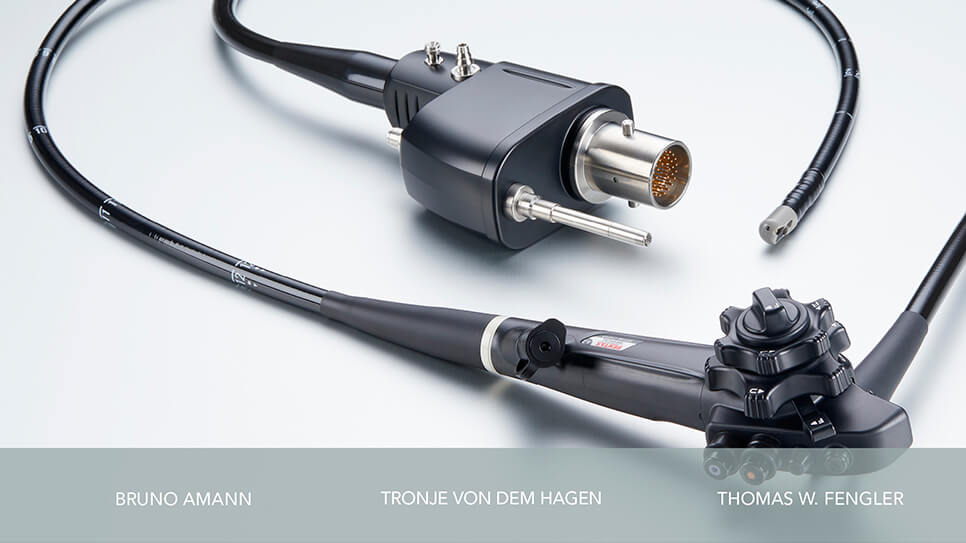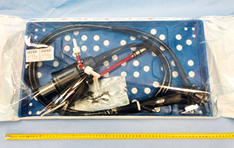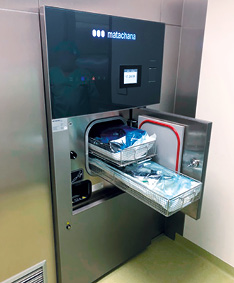Patient safety is the compromise of the treating physician and his staff to the patient, who relies on his knowledge, experience and technology.
The structure and complexity of flexible endoscopes often make them critical MPs (Spaulding). For blood contact and work in sterile body cavities and areas, a final sterilization measure has therefore been recommended since (at least) 2012 (KRINKO 2001/2012).
The evidence of partly fatal infections requires a new risk assessment by the operator. What is necessary to make the reprocessing of these thermolabile reusable medical devices safer through additional measures?
The prevention of the growth of remaining, potentially pathogenic microorganisms (including spore formers such as Clostridioides difficile) is the aim of any sterilization measure. Sterile barrier packaging and guaranteed drying at the end of the sterilization process end the discussion about storage or drying cabinets, as these are no longer needed for sterilized and packaged medical devices. Thermolabile flexible duodenoscopes or bronchoscopes are packaged and ready for internal or external transport and application.
This has been made possible by the proven LTSF (Low Temperature Steam with Formaldehyde) sterilization for more than 40 years. In contrast to the potentially hazardous 100% ethylene oxide gas sterilization (e.g. due to insufficient outgassing), an aqueous solution evaporating in the process with only 2% formaldehyde is sufficient for successful sterilization. The WEBECO FA95, the successor Matachana 130LF® and its latest High Speed version have for many years made it possible for the Leopoldina Hospital in Schweinfurt to provide standard-compliant, safe and simple operation.
By complying with the current process-specific criteria (VSK) of plant 5 of TRGS 513, the control measures redundant by MPBetreibV from the Hazardous Substances Ordinance for the operating permit that this process in a RUMED is no longer required.In contrast to other processes, the LTSF process is characterised by high material compatibility and extremely high penetration capacity in narrow, long ducts (from 0,5 mm inner diameter up to 4 m length) at 60 and 78°C. The LTSF process is also characterised by a high degree of material compatibility. These are properties that offer additional safety for the sterilization of long lumen flexible endoscopes with narrow multichannel structures to avoid infections due to microbial growth.
Of course, sterilization does not replace cleaning, but is a protective measure, as cleaning on internal surfaces cannot be checked. By definition, complete cleaning would make sterilization superfluous. However, our current risk assessment must assume at least 1% microbial colonization due to the documented events of the last year (tenth), which is suggested by the various publications (available from the authors).
Clinical investigations are currently being conducted with flexible endoscopes of any length from bronchoscope to duodenoscope in order to obtain validatable results with flexible endoscopes. At the same time, the usual simulation tests are carried out with various test specimens in order to obtain maximum certainty with regard to the achievable sterilization results or to identify limits.
The unrivalled high loading capacity of the LTSF sterilizer in the clinic is the subject of critical examination with regard to cleverly optimized placement, with a view to the various packaging and loading options (handling). In particular, the drying results inside and outside are examined. Finally, safe transport and storage depend on this. The qualitatively and economically best alternative to EO sterilization must function reliably, especially with the optimized 60 °C High Speed program, which shortens the sterilization time in the new 130LF High Speed to about 90 minutes, depending on the load.
Example of packaging: PENTAX Gastro-Duodenoscope double wrapped in paper/foil. Photo shows test package for microbiological examination. Channels closed with spore carrier (Geobacillus stearothermophilus).
The LTSF batch times are thus comparable to the steam and H2O2 processes: One to two colonoscopes, two to three duodenoscopes or three bronchoscopes/ureterenoscopes could be available, packaged after less than 2 hours of sterilization.
This additional patient safety through a final sterilization measure is of great importance for returnable endoscopes, especially at high endoscopy frequencies. Even established gastroenterologists (urologists, pulmonologists, etc.) can make use of this service of the regional hospital (after contractually regulated agreement) to focus their own work on the patient. The sterility of the flexible endoscope is guaranteed by the manufacturer’s procedure.
For more details on testing procedures and results, visit www.matachana.com
Test load (full load).
Lower loading basket: R. WOLF Ureterorenoscope (with test spore carrier), double wrapped in paper/foil. Including 12 double-packed recipe pellets of different inner diameters/lengths with spores of Geobacillus stearothermophilus.
Upper loading basket: PENTAX Gastroduodenoscope, double wrapped in paper/foil.




Latest comments